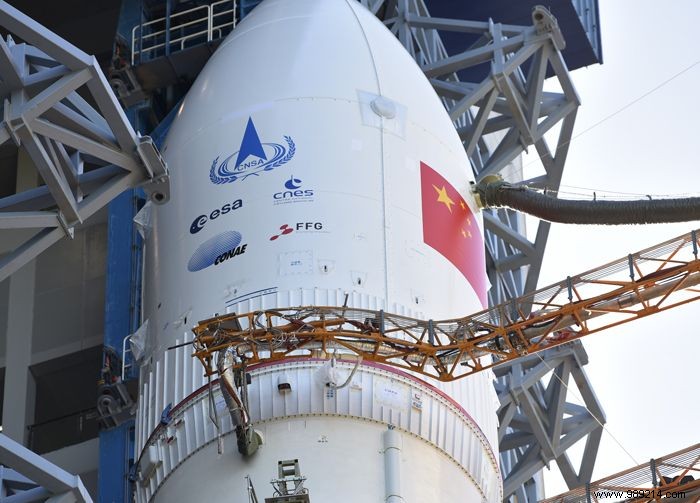The Chinese National Space Agency has just operated several instruments of the Tianwen-1 mission in the vacuum of space. The spacecraft, en route to Mars, is also preparing for its second trajectory correction maneuver.
On July 28, China launched with its Tianwen-1 mission from the base of Wenchang, direction Mars. As a reminder, it is planned to place an orbiter around the planet and deploy a rover on the surface. A first for the Chinese space agency. The main objective of the mission will be to probe the distribution of water ice in the Martian subsoil. It will also be about mapping the geological structure of the planet.
As with Perseverance, the Tianwen-1 mission is normally scheduled to reach Mars in February 2021. However, the Chinese rover will remain attached to its orbiter for two to three months before attempt a landing on Utopia Planitia. This vast plain extends in the northern hemisphere for about 3,200 km.
In the meantime, the mission is on its way. On August 19, mission engineers successfully tested several of the instruments installed on the orbiter, including a magnetometer, a spectrometer and medium and high resolution remote sensing cameras. Note that the orbiter carries a total of seven payloads, while the rover carries another six.
“So far so good, reassured Wang Chuang, head of the mission. We will continue to monitor his 'state of health' throughout the flight, and we will carry out regular checks on him" .
There is also talk of the ship performing its second course correction maneuver next September. The first was performed on August 1. In total, Tianwen-1 will execute four before reaching Mars.
This Sunday (August 23), the spacecraft was positioned more than nine million kilometers away of the Earth (as the crow flies), after more than 86 million km traveled . By the time it arrives in the Martian system, it will have traveled more than 500 million .

For its part, NASA fired the thrusters of its Perseverance rover into deep space for the first time on August 14th. Again, with the aim of correcting its trajectory towards the red planet. The American mission plan foresees four other maneuvers of the same kind before arriving on Mars. They will be performed on September 28, December 20, February 10 and February 16.
Just over a week after the launch of the mission, NASA successfully tested the performance of the Ingenuity rotorcraft's six lithium-ion batteries. While waiting for its arrival on Martian soil, the American Agency now offers an application to follow the trajectory of the mission in real time.